— About Us
Preserving the past, protecting the future
Discover the story of Durham with us.
What We Do
Preservation Durham works to protect Durham’s unique sense of place by sharing our passion and knowledge. We offer education and advocacy to the public, stakeholders and public officials. We encourage everyone to preserve the places they love and show them how. We collaborate to protect Durham for future generations.
Who We Are
Preservation Durham is made up of folks who believe that place is important and that our past helps to shape our future. We want Durham to embrace growth and change but also to protect its sense of place – its unique identity in the Triangle – and to remain open and available to all in our community. Everyone’s story has a place.
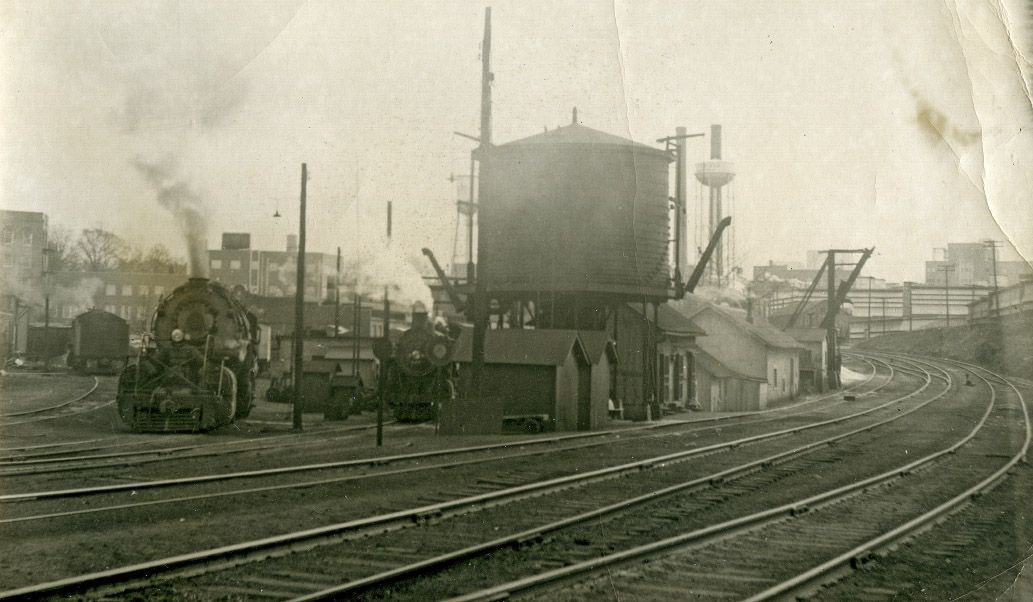
Fast Facts
- Established in 1974
- 2 staff members
- More than 50 properties and buildings saved
- Over 200 plaques placed
— Durham 101 —
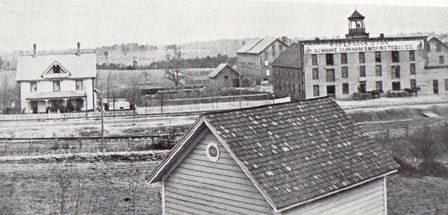
Durham's Beginnings
Durham began in 1854, when Dr. Bartlett Durham sold four acres of land to the North Carolina Railroad Company to build a new station between Hillsborough and Raleigh. A small village soon sprang up around the depot. In 1865, huge armies of Union and Confederate forces gathered around Durham’s Station as General Joseph E. Johnston negotiated his surrender to General William T. Sherman at Bennett Place, the largest troop surrender at the end of the Civil War.
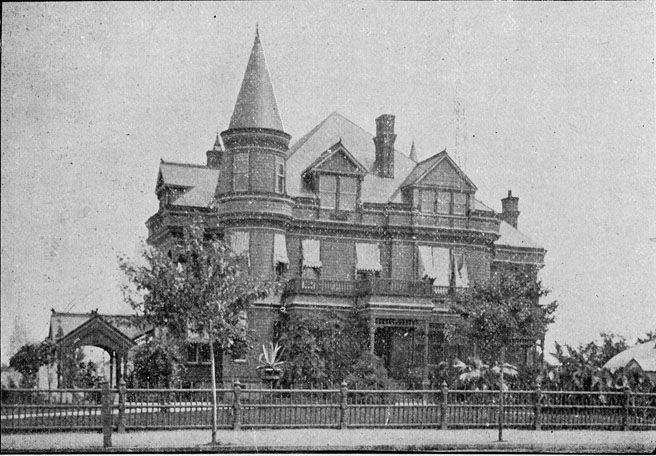
Duke’s mansion, Fairview, was built across the street from W Duke Sons & Co Tobacco Factory
After the Civil War
R. F. Morris had opened the first tobacco factory in 1854, but the industry came into its own after the Civil War as demand for smoking tobacco spread nation-wide with returning veterans.
Tobacco manufacture began in earnest and large factories attracted workers from the surrounding farms. Durham’s population swelled from about a hundred in 1865 to over 2000 by 1880.
Textiles were also an important industry, with mills established near the railroad lines. Banks and insurance companies made Durham an important financial center. When the Trust Building opened on Main Street in 1910, it was the tallest building in North Carolina, with six stories.
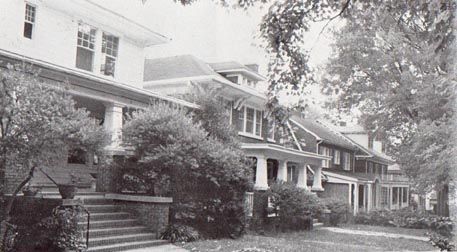
Durham Grows with Tobacco
As the city grew, residential neighborhoods spread around the industry at the heart of town including both elaborate mansions for the industrial magnates and rows of shotgun houses for the tobacco workers. Trinity College, later Duke University, moved to Durham in 1892, and the early streetcar suburbs of Trinity Park and Trinity Heights provided housing for the faculty and staff. Streetcars also connected Lakewood, North Durham, and other growing neighborhoods.
Hayti became a center of the African American community, and North Carolina College for Negroes, later North Carolina Central University, was established on Fayetteville Street in 1910. Parrish Street downtown was the home of the North Carolina Mutual Insurance Company and the Mechanics and Farmers Bank, earning it the name The Black Wall Street.
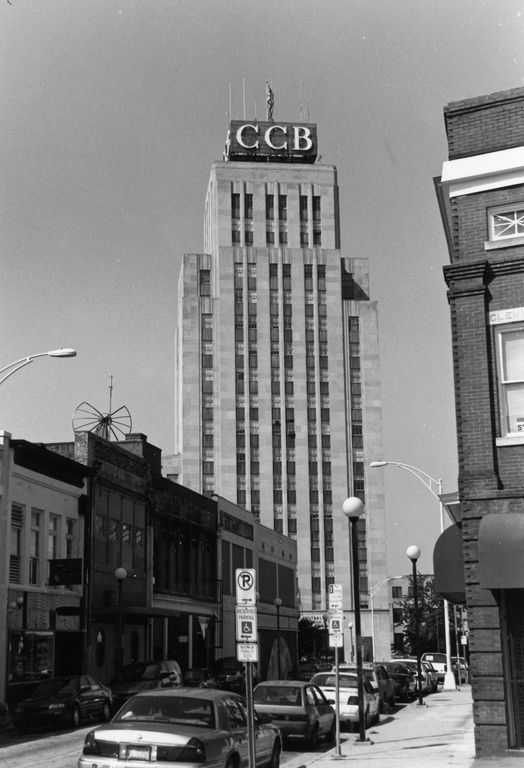
The Hill Building, a 17-story skyscraper completed in 1937.
Twentieth Century Durham
Many of Durham’s downtown buildings were erected during the public works boom of the 1930s, including the Post Office, the Armory, Durham Athletic Park, the Snow Building, and the CCB and Kress buildings.
For most of the 20th Century, Durham was an industrial city, manufacturing tobacco and textile products that were known internationally, but as these industries changed and moved out of Durham, the city also changed.
By the 1970s, shopping malls and suburbs had drawn people away from the downtown historic district. Urban renewal projects resulted in the building the Durham Freeway and the Downtown Loop, and many historic buildings were demolished, including the Spanish Revival-style Railroad Station and the Washington Duke Hotel.
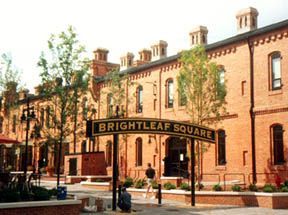
The City’s Revival
The 1980s saw the beginnings of the revival of Durham’s historic neighborhoods. The shopping center Brightleaf Square was made out of two abandoned tobacco warehouses and the historic Carolina Theatre was transformed into a showcase for movies and live performances.
City residential neighborhoods also received new attention as young urban pioneers bought historic homes in Trinity Park, Old North Durham, Old West Durham and other areas and restored them with tender loving care.
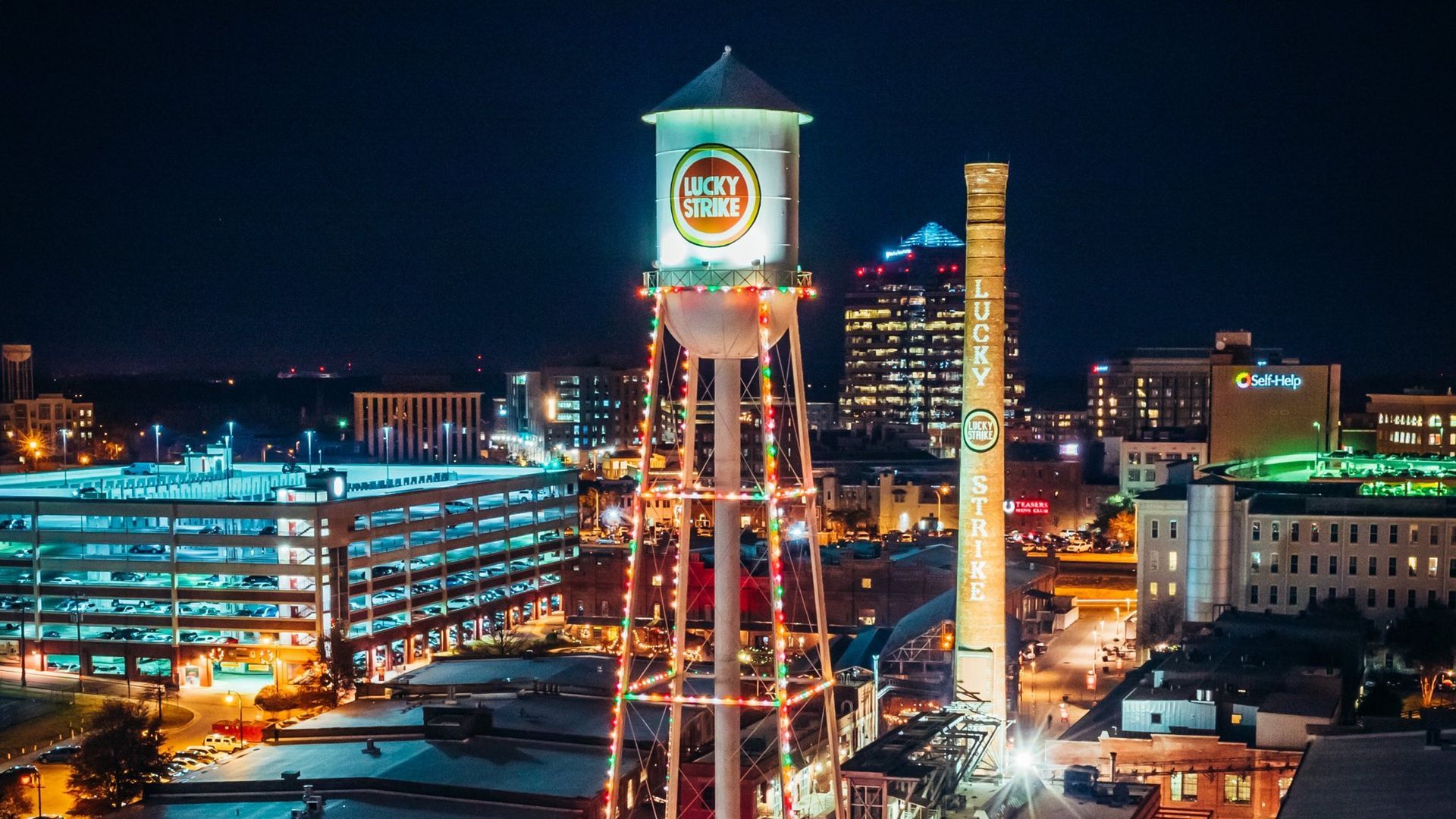
Durham Today
In the later years of the 20th century, and building momentum in the initial years of the 21st, Durham has been preserving block upon block of its historic architecture, including tobacco warehouses and factories, by transforming them into vibrant offices, shops and restaurants. Emblematic of the city’s renaissance embracing its history is the American Tobacco complex, North Carolina’s largest historic rehabilitation project. Today, more people work in its top-rank offices than toiled there at the peak of American Tobacco’s cigarette production.
Just a few blocks from American Tobacco, the once-abandoned Liggett and Myers factory has been transformed into West Village, a complex of popular apartments and a few retail shops. A refurbished Durham Athletic Park is alive with activity again, while a new Durham Performing Arts Center and Durham Bulls Athletic Park have joined with many innovative historic rehabilitation projects to create a downtown that is vibrant, alive, and cool.
From a small railroad depot, to a booming tobacco town, to a sophisticated urban destination, Durham, NC has evolved into a diverse city where remembering those historical roots has become a signature of civic pride. Durham today encompasses much of The Research Triangle Park – the leading and largest high technology research and science park in North America. Durham has gained international recognition for its food scene, and it preserves its natural beauty through dozens of parks, waterways, state recreation areas, and more. As a colorful, creative, and welcoming community, Durham is now known as the place where great things happen.
The Historic Preservation Society of Durham, founded in 1974, and now named Preservation Durham, has worked with neighborhood associations, civic, business and political leaders to foster that evolution and to promote the benefits of preserving Durham’s architectural heritage.

